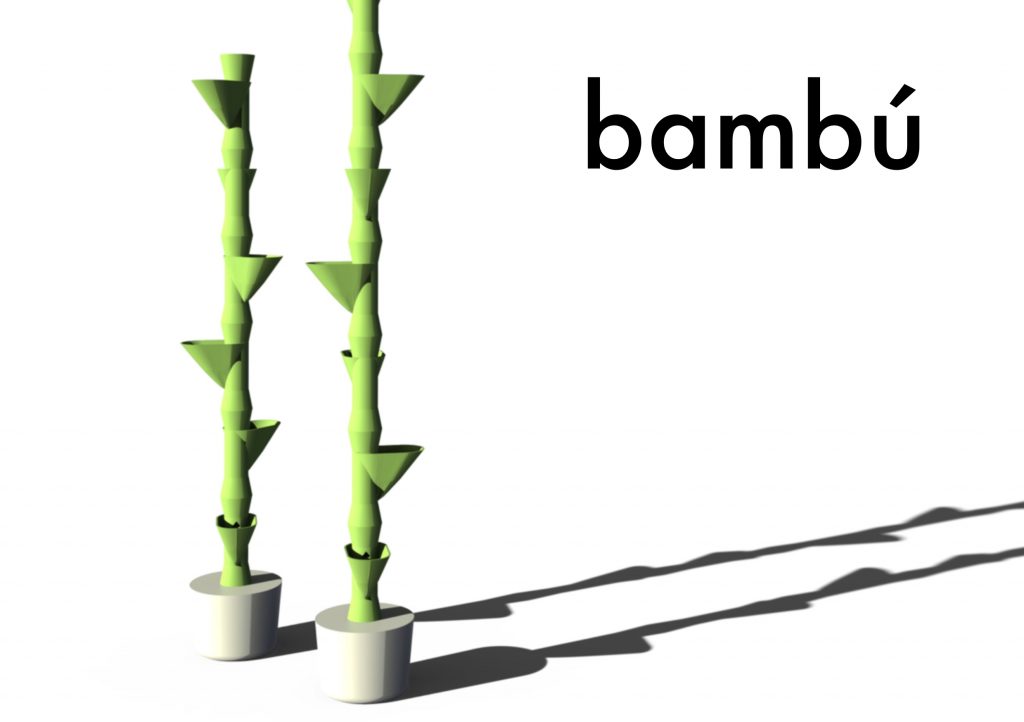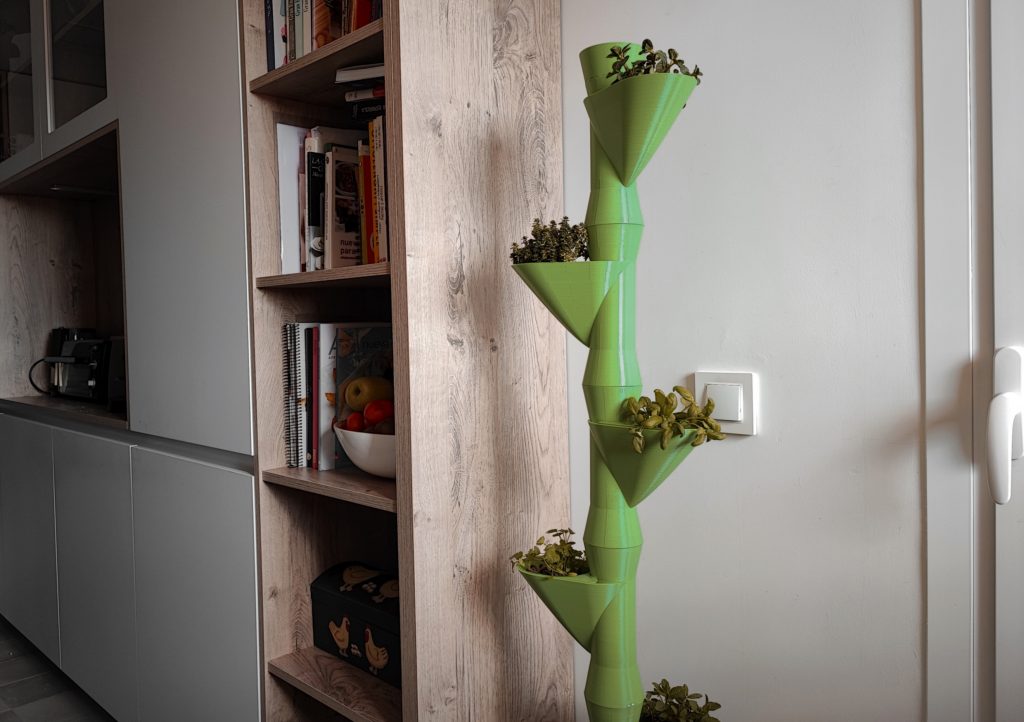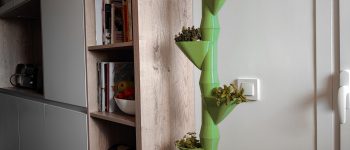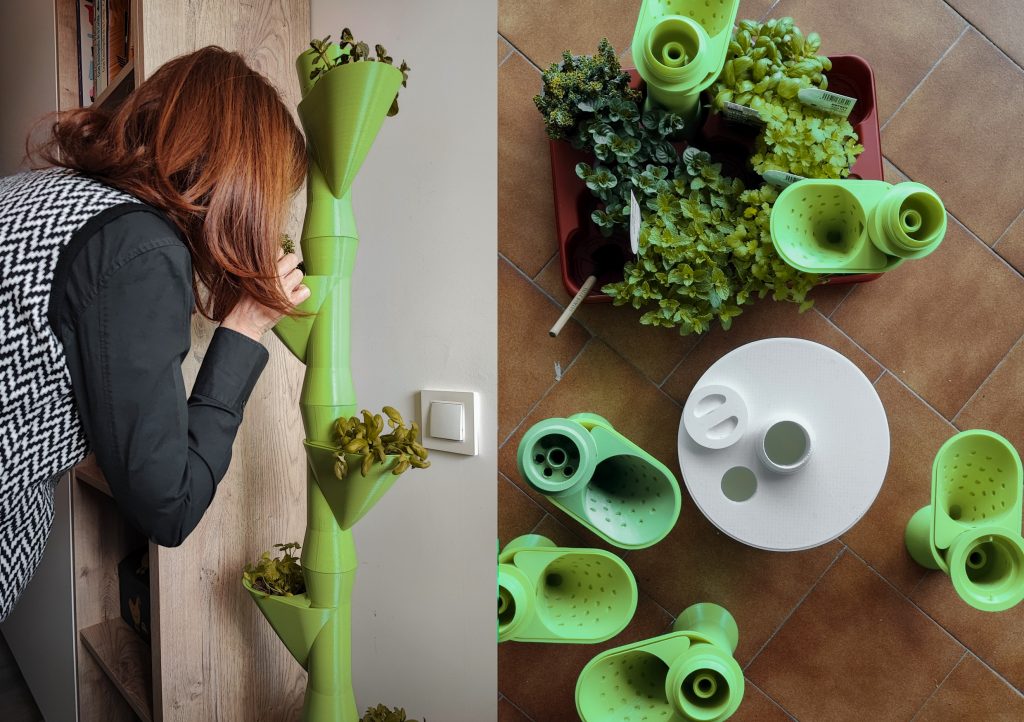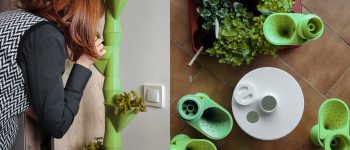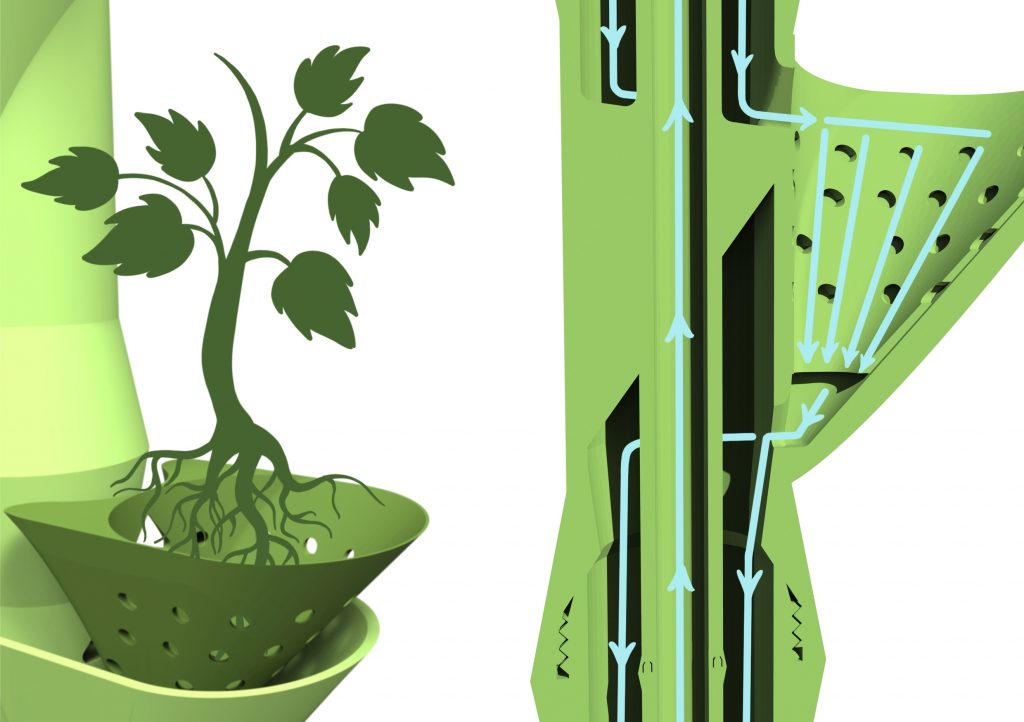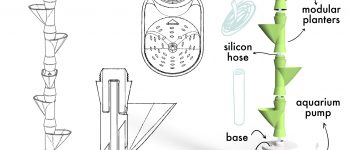Its modular design allows you to play with its height according to the space of your home, with the combination of vegetables to grow according to your needs, and its orientation for optimal use of solar energy.
In it you can grow from aromatic plants to vegetables and it is therefore a sustainable, compact garden with sufficient capacity for a production that takes advantage of energy (both in its manufacture and in its operation) and is self-sufficient.
To operate the bamboo, an aquarium pump is required, which should be attached to the bottom of the base container and an outlet pipe should come out of it to pump the nutrient water to the top of the bamboo (in general any aquarium pump will do, but check that it will pump the water to the desired height of the garden). This pump will be connected to a solar panel that collects the solar energy as well as the bambu plants.
The base cover has a hole in it to pass the power cable that will connect the pump to your household socket. This hole could also be used to pour in water as it is consumed or to introduce nutrients.
The outlet pipe from the pump should be inserted into each of the modular pots as the garden is being assembled until the last pot or bamboo top is reached. At this point the PVC tube-hose, which is also sold as aquarium equipment, is cut and finally the system is closed with the lid.
Once the bamboo is mounted and the water flow through the garden has been started by the pump, it is time to start cultivating.
The crops can be directly incorporated, by the roots, into the containers of the pots without substrate, or they can be filled with leca balls or expanded clay to achieve a better fixation of the plants.
All you have to do is wait and let bamboo work for you by continuously watering the crops, which, thanks to hydroponics, will grow quickly.
Replacing conventional agricultural practices with hydroponics would mean a change towards sustainability, fighting against climate change and the extinction of species caused by overexploitation and intensive farming. It also allows for a more rational use of water and energy, which are increasingly important commodities. Hydroponic crops are also more profitable and easier to control, making them an ally in the fight against hunger and ensuring food security. In addition, skipping the whole process of preparing, preserving, packaging and transporting crops/food would save energy.
But, most importantly, and related to energy savings, hydroponics also forms part of the latest trends in smart farming, which consists of using technological tools, from geolocation to big data, artificial intelligence and drones, to obtain greater crop yields and save energy.
The application of 3D printing as a bambu production technique offers multiple benefits:
- Self-sufficient production, avoiding waste of material and energy, printing just what is needed.
- Adaptation to your needs, tastes and the space of your home. As it is a modular design in terms of distribution, size and colour, it can be used for a wide range of crops.
- Suitability of the material: recycled PLA, on the one hand to give a new life to the plastic, and on the other hand to take advantage of its properties: impermeability, low cost, resistance and flexibility.
- Ease of maintenance by being able to immediately print spare parts and components.
- Possibility of creating improvements, extensions and complements that improve the user-product experience.

